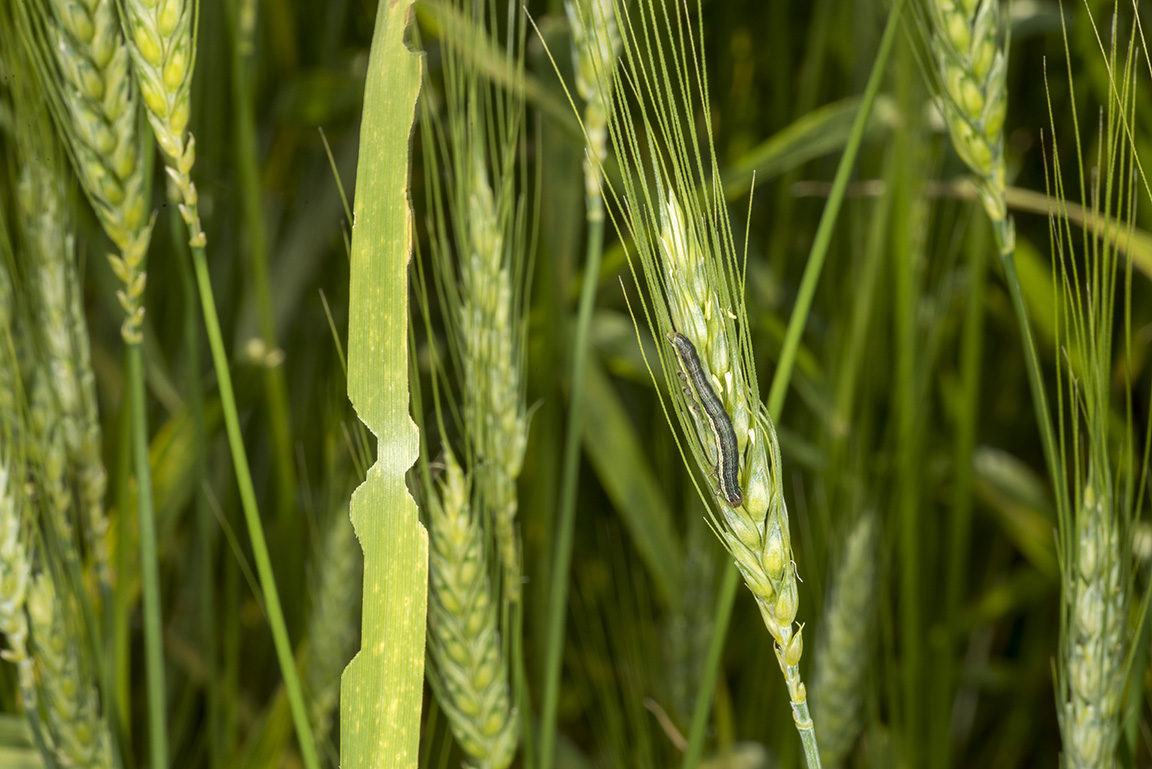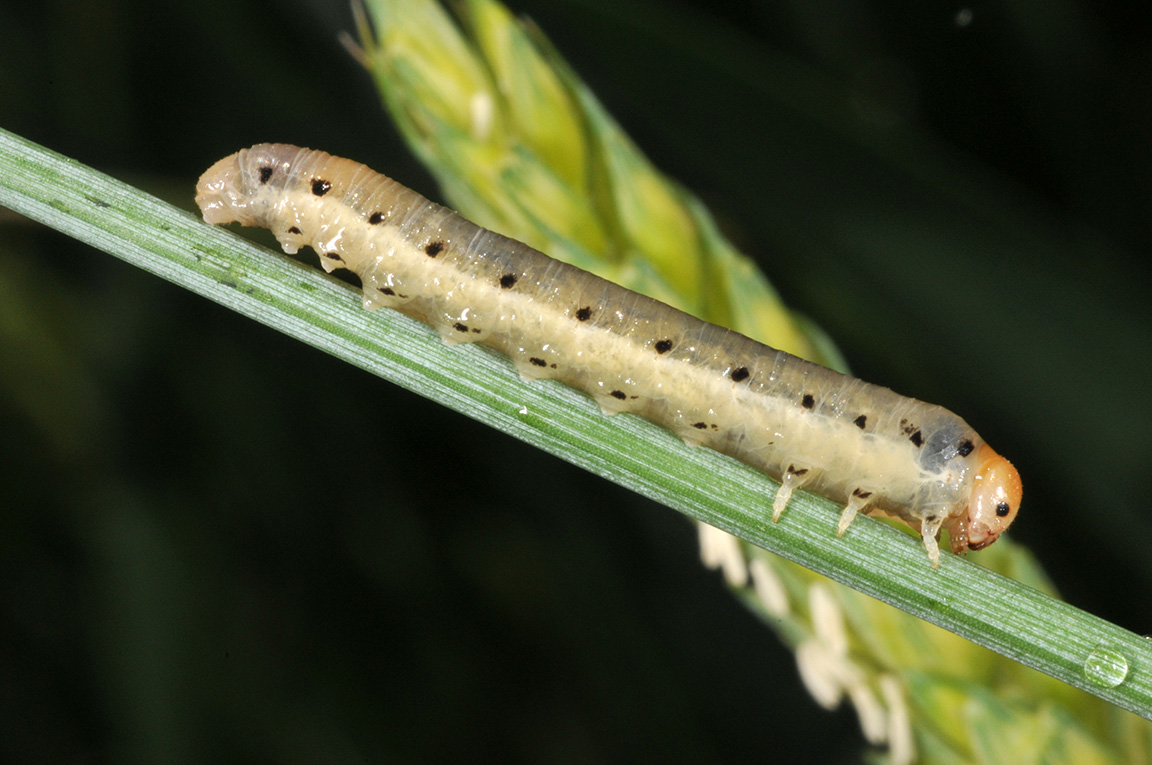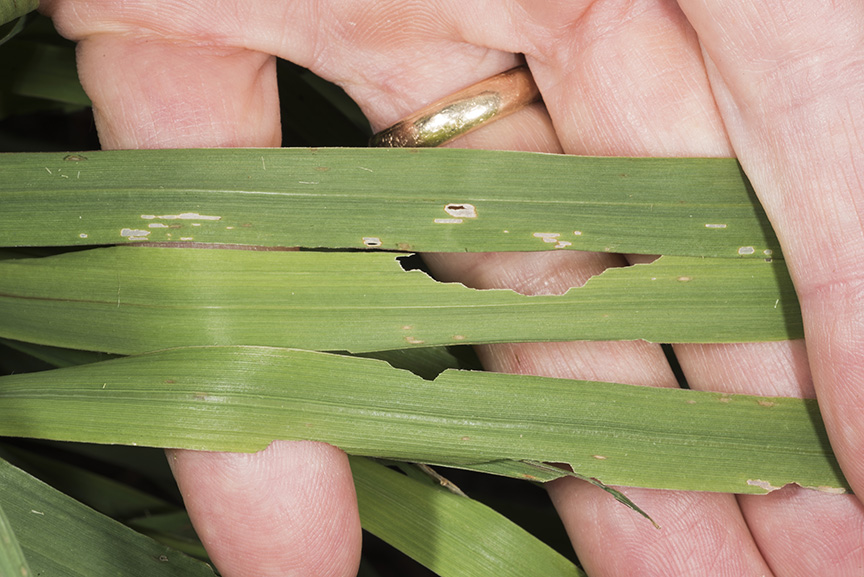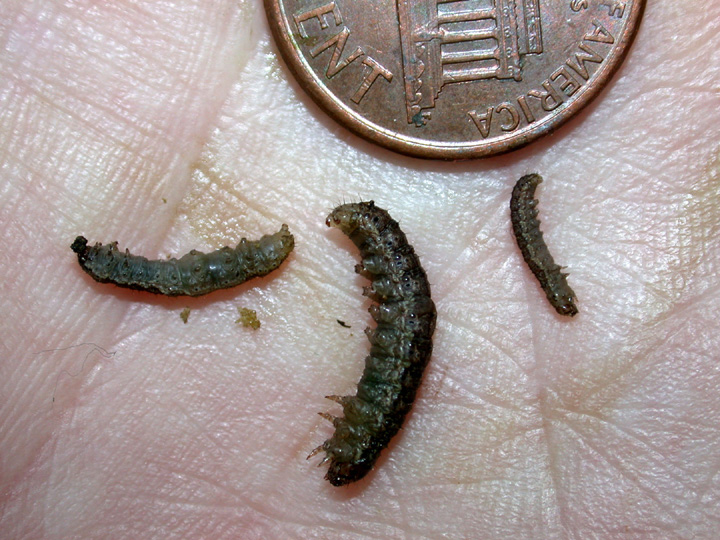
Earlier this week, we received reports of armyworm in northern counties continuing to damage wheat.


Earlier this week, we received reports of armyworm in northern counties continuing to damage wheat.
Armyworm Pheromone Trap Report – 2024
Armyworm Pheromone Trap Report – 2024
In this video, three different areas of a soybean field that have been subjected to extended periods of saturated soils to flooding are assessed for damage.

Small, caterpillar-like larvae, often confused with armyworm, can occasionally be found in wheat and some other grassy cover crops. These are not caterpillars at all, but are sawfly larvae, likely grass sawfly (Pachynematus sp.). Adult sawflies are insects with four wings that are distant relatives of the honeybee. They can be thought of as primitive wasps, but they do not have a stinger. The larvae are usually plant feeders and a few are pests of home gardens (rose sawfly or the confusingly named pear slug, for example). The sighting of foliage feeding sawfly larvae in wheat fields is infrequent in the Midwest. And although this species feeds on the leaves, it is minor pest. This is more of a curiosity than anything else, and an opportunity to learn the differences between different insect larval types – always fun! Full size larvae, about 1.25 inches, may feed on stems causing head[Read More…]
Armyworm Pheromone Trap Report – 2024
Armyworm Pheromone Trap Report – 2024
Armyworm Pheromone Trap Report – 2024

Over the past six weeks, armyworm moth captures at the Purdue Ag Research Centers (see accompanying “Armyworm Pheromone Trap Report”) have been variable.

Could this be a cutworm year? Rainfall has delayed field work (e.g. weedy fields) and corn planting (i.e., lots of emerging corn).
© 2025 Purdue University | An equal access/equal opportunity university | Copyright Complaints | Maintained by Pest&Crop newsletter
If you have trouble accessing this page because of a disability, please contact Pest&Crop newsletter at luck@purdue.edu.